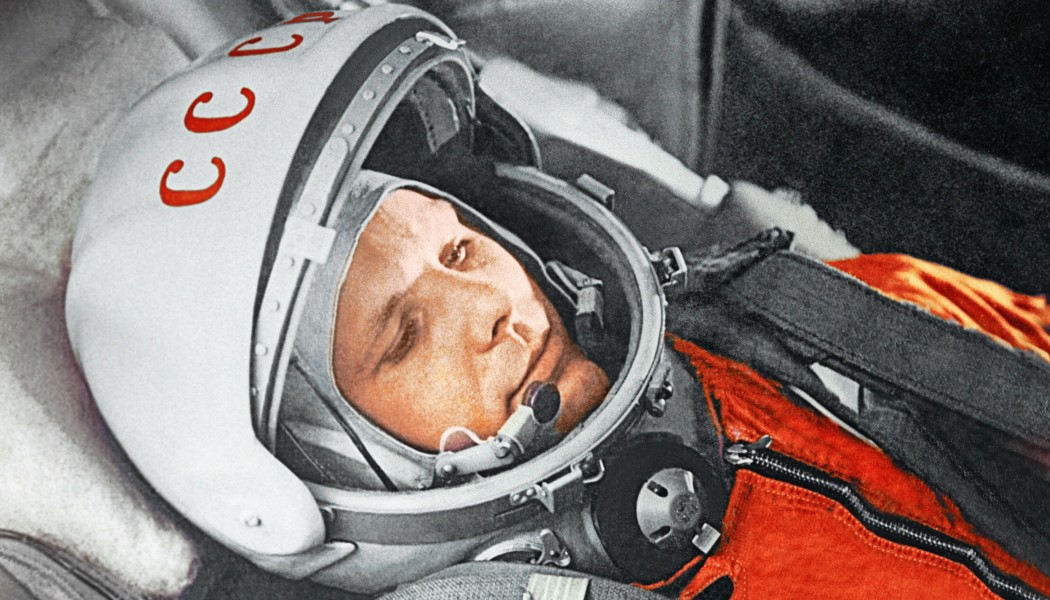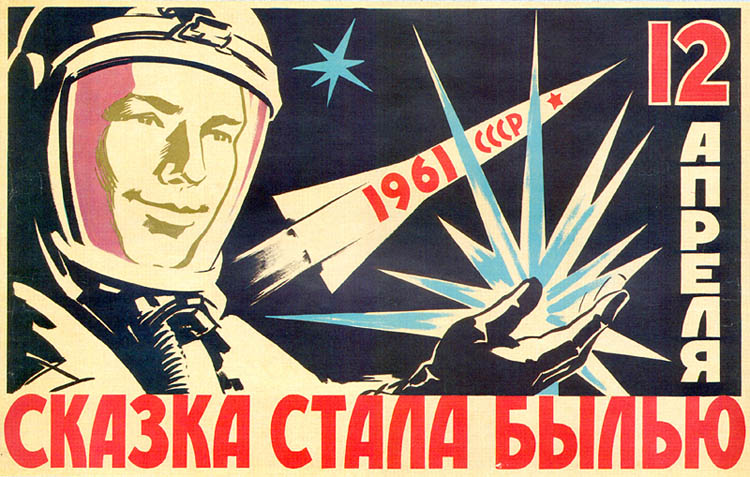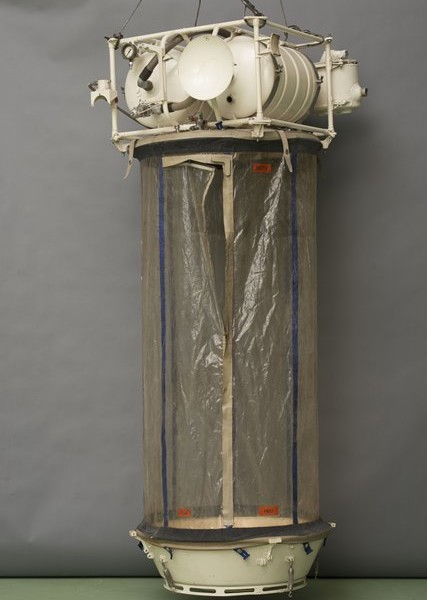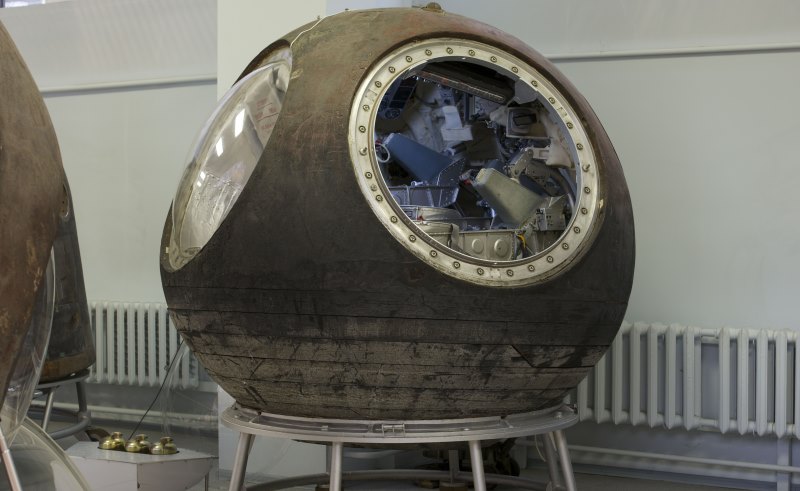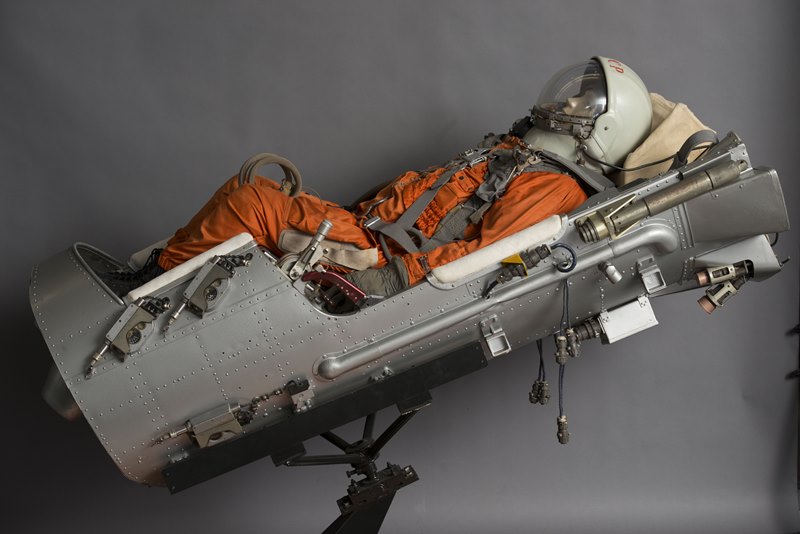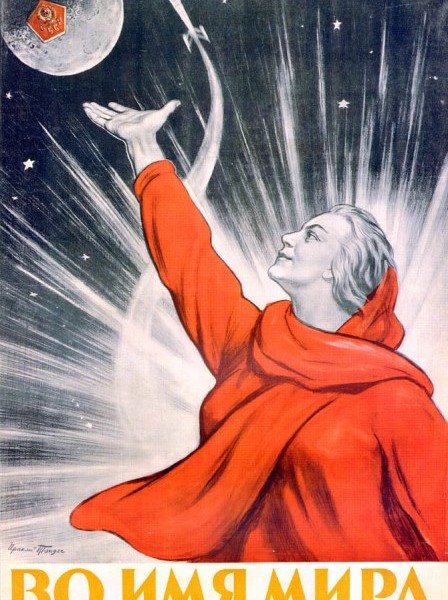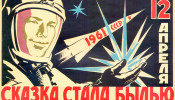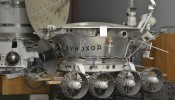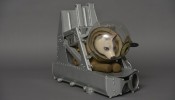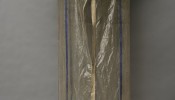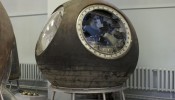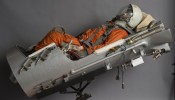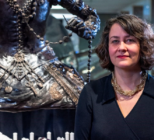Leonov was at the Science Museum to announce the opening date of 18 September 2015 for the highly anticipated Cosmonauts: Birth of the Space Age exhibition.
The Cosmonauts exhibition will feature the most significant collection of Russian spacecraft and artefacts ever to be shown in the UK. The exhibition tells the remarkable story of scientific and technological ingenuity that kick-started the space age with a record number of firsts for the Soviet Union. From the work of late 19th century Cosmist thinkers who first proposed that humanity’s destiny lay in space, to the reality of living in space on board Mir and the International Space Station, the Cosmonauts exhibition will give visitors a unique opportunity to get up close to many of the key innovations that made space exploration possible.
Cosmonauts will explore the science and technology of Russian space travel in its cultural and spiritual context, revealing a deep-rooted national yearning for space that was shaped by the turbulent early decades of the 20th century. The exhibition will feature rocket pioneer Konstantin Tsiolkovsky’s extraordinary 1933 drawings of space flight, depicting spacewalks, weightlessness and life in orbit almost thirty years before it became a reality.
In 1957 the Soviet Union launched Sputnik, the world’s first artificial satellite, and four years later sent the first human into space – Yuri Gagarin. However, the story of space exploration is much older.
Lead Soviet rocket engineer and designer Sergei Korolev is said to have insisted on Sputnik’s shiny appearance because he believed that one day replicas would be displayed in the world’s museums, and visitors to Cosmonauts will be able to look inside an original model of Sputnik from 1957.
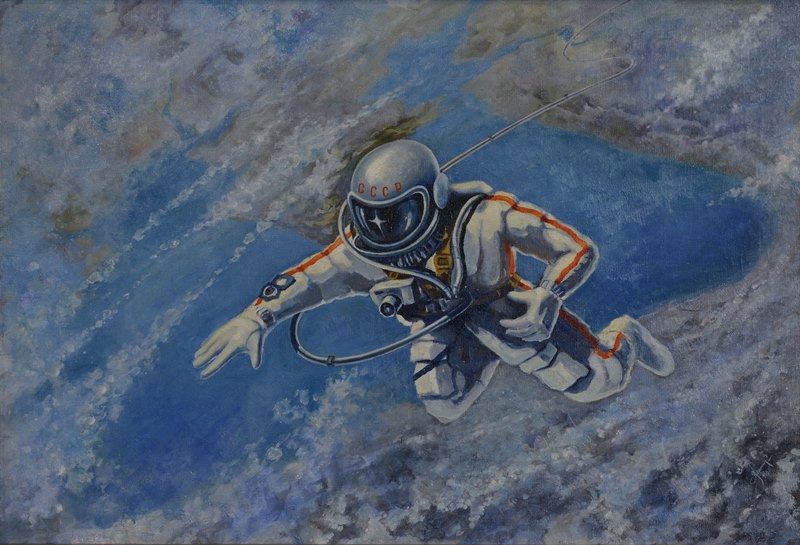
Alexei Leonov’s famous 12 minute spacewalk took place on 18 March 1965 and was immediately hailed back on Earth as a remarkable achievement. However, Leonov and crew mate Belyayev had faced one emergency after another during the mission: Leonov battled to re-enter the spacecraft after his spacewalk; the navigation system then failed and the crew had to steer the craft manually towards Earth; it then tumbled violently, exposing the two men to ten times the force of gravity. Finally, their adjusted descent meant they landed hundreds of kilometres off course in the Ural Mountains and were forced to spend the night in -25C.
Cosmonaut Alexei Leonov said: “There were many problems during my first flight. Many of those were impossible to test on Earth, for example, how would the space suit react in the vacuum of space? But I had to do it. What I want to say is that even if it’s only a small thing you want to achieve, you still need to make every possible effort and do it thoroughly.”
The Soviet Union followed the great success of Sputnik 1 by launching the first animal, man and woman into orbit in just six years. Amongst the star objects on display in the exhibition will be real cosmonaut-flown spacecraft, including Vostok-6, the actual capsule that carried Valentina Tereshkova, the first woman to travel into space, safely back to earth in 1963. Visitors will have the rare opportunity to see inside this historic spacecraft in its first ever UK appearance.
Ian Blatchford, Director of the Science Museum, said: “We are honoured that Alexei Leonov could join us today, fifty years after becoming the first person to walk in space. Cosmonauts is a once-in-a-lifetime exhibition that has taken years of dedication and skill from the Science Museum team to make a reality. The Russian space programme is one of the great intellectual, scientific and engineering successes of the 20th century and I am thrilled that we have been able to bring together such an outstanding collection of Russian space artefacts to celebrate these achievements. I want to thank all our partners and funders who have made this exhibition possible.”
Although the remarkable achievements of the American Apollo Moon programme were widely broadcast at the time, Russia’s own competing manned Moon programme was kept secret until 1989. Revealed for the first time in the UK, visitors to Cosmonauts will see the monumental five metre tall LK-3 lunar lander, the finest example of its kind in existence today. Designed to take a single cosmonaut to the Moon’s surface, three Soviet lunar landers were tested successfully in space although none were sent to the Moon.
With the move by both Russia and America to create a more permanent human presence in space from the 1970s, international co-operation became increasingly necessary. Visitors to Cosmonauts will have the opportunity to see some of the ingenious technologies developed by Russia for use on board its Salyut and Mir space stations and then the International Space Station.
Cosmonauts represents a major collaboration between the Science Museum, the State Museum Exhibition Centre ROSIZO, the Memorial Museum of Cosmonautics and the Federal Space Agency, Roscosmos. The support of many other institutions and individuals in the UK and Russia has also been crucial in the development of the exhibition.
The exhibition opens on 18 September 2015 and will run until 13 March 2016 at the Science Museum in London. The Museum will be open until 10pm every Friday evening during this period to allow visitors more opportunities to see the exhibition. Tickets are on sale now and for more information visit the Science Museum Cosmonauts page for further details.
Cosmonauts: Birth of the Space Age
Unique: Features the greatest collection of Soviet spacecraft and artefacts ever exhibited outside Russia
History: Tells the story of how Russia kick-started the space age
Discovery: From the thinking of 19th century Cosmists to launching the first artificial satellite and first dog, man and woman into space
Principal Funder: BP Plc
Major Funder: ART RUSSE
Additional Funding: Blavatnik Family Foundation

